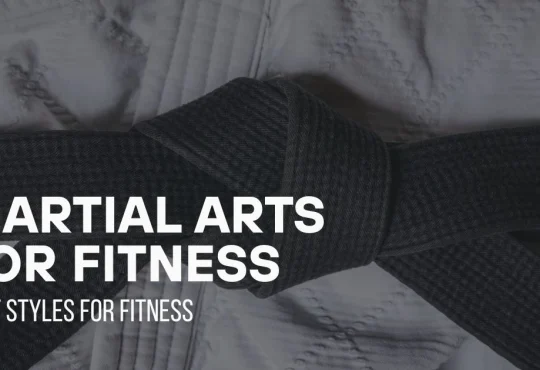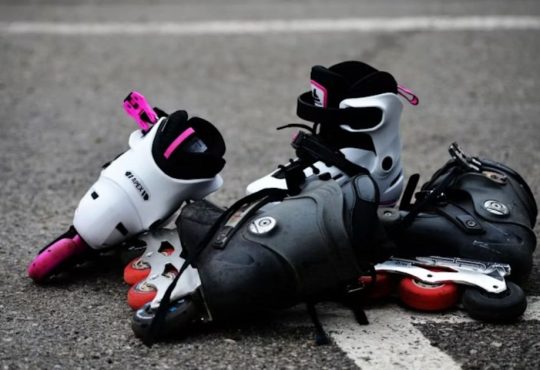Ice skating is a sport that combines athleticism, grace, and sheer fun. Whether you’re a casual skater or training for figure skating competitions, the key to success on the ice lies in improving your technique and building confidence. One of the most effective ways to do this is through regular practice, especially by incorporating targeted drills into your routine. These drills not only help refine your skills but also instill the confidence needed to tackle more challenging moves. In this article, we’ll explore a variety of fun and effective ice skating drills designed to boost your technique and confidence, covering everything from balance to spins and jumps.
Overview of Ice Skating Drills for Technique and Confidence
Ice skating drills are structured exercises meant to focus on different aspects of your skating abilities, whether you’re a beginner looking to master the basics or an experienced skater aiming to refine your form. Each drill is designed to target specific areas such as balance, edge control, speed, agility, or even your ability to perform intricate movements like spins and jumps.
For skaters of all levels, the most important thing is to approach these drills with dedication and patience. Confidence on the ice comes from muscle memory, which can only be built through repetition. The more time you invest in practicing and perfecting these drills, the more natural your movements will become.
Let’s dive into the key drills that will help you elevate your skating skills and boost your self-assurance on the ice.
Balance Drills
Balance is the foundation of all ice skating techniques. Without proper balance, it’s difficult to execute any skating move smoothly. Developing your ability to balance on ice is essential, whether you’re trying to skate forwards, backward, or perform complex maneuvers. The good news is that balance can be significantly improved through a series of fun and challenging drills.
One-Foot Glides
One of the simplest yet most effective drills for improving balance is the one-foot glide. Start by skating forward on both feet, then lift one foot off the ice while maintaining your forward momentum. Try to hold the glide for as long as possible before switching feet. Focus on keeping your core tight, your arms steady, and your body centered over your skating foot.
• Key benefits: Builds leg strength, enhances stability, and trains muscle memory for skating on one foot.
Circle Glides
Once you’re comfortable with one-foot glides, take things up a notch by adding circular motions. Skate forward and, while gliding on one foot, trace large circles on the ice. This will challenge your ability to maintain balance while turning, further enhancing your control over your body.
• Key benefits: Improves body control, trains you to maintain balance during turns, and builds confidence in changing directions.
Flamingo Drill
This fun drill mimics the posture of a flamingo. Skate forward on both feet, then lift one knee up toward your chest while balancing on the other foot. Hold the position for as long as possible, then switch legs.
• Key benefits: Enhances core stability, improves single-leg balance, and boosts overall body coordination.
Edge Work Exercises
Edge work refers to the ability to skate on the edges of your skate blades—inside and outside—rather than flat on the blade. Mastering edge control is crucial for turns, transitions, and more advanced movements. Practicing edge work not only gives you better control over your movements but also makes your skating look more fluid and professional.
Inside and Outside Edges
Start by practicing your inside edges, which involve leaning your body slightly inward while skating. Glide on a single foot, focusing on pressing down on the inside edge of the blade. After you’ve mastered the inside edges, switch to practicing outside edges, where you lean outward. The goal here is to gain comfort skating on both edges to make your movements more versatile.
• Key benefits: Improves maneuverability, builds control over the blade, and enhances turning abilities.
Slalom Drill
For this drill, imagine skiing in a slalom course. Skate forward while shifting your weight from one edge to the other in a zig-zag pattern. Focus on carving smooth arcs on the ice by leaning into your edges as you weave back and forth.
• Key benefits: Enhances agility, improves edge control, and strengthens your lower body.
Forward and Backward Edge Rolls
This drill involves rolling from one edge to another while skating forward or backward. Start by gliding on one foot and rolling from your inside edge to your outside edge in a continuous motion. Then switch feet and repeat the motion. You can also practice this drill while skating backward to challenge your coordination.
• Key benefits: Strengthens your edges, builds smoothness in transitions, and increases confidence in directional changes.
Crossover Drills
Crossovers are an essential skill for anyone looking to skate quickly and fluidly. Whether you’re taking a sharp turn, accelerating, or skating backward, crossovers help you maintain momentum while navigating curves.
Forward Crossovers
Begin by skating in a large circle and performing forward crossovers. Cross one foot over the other while maintaining your speed and leaning slightly into the curve of the circle. Make sure to practice in both directions to build strength and coordination on both sides.
• Key benefits: Builds speed, improves coordination, and enhances your ability to navigate turns.
Backward Crossovers
Once you’ve mastered forward crossovers, it’s time to move on to backward crossovers. Start by skating backward in a circle and crossing one foot over the other, just as you would for forward crossovers. Backward crossovers can be more challenging, so take your time to get comfortable with the motion.
• Key benefits: Increases agility, builds muscle memory for backward skating, and improves your confidence in complex movements.
Alternating Crossovers
To further challenge yourself, try alternating between forward and backward crossovers in a figure-eight pattern. This drill will not only improve your crossover technique but also help you transition more fluidly between different skating directions.
• Key benefits: Enhances agility, builds directional control, and trains smooth transitions.
Backward Skating Drills
Backward skating is a crucial skill for any skater, whether you’re playing hockey, figure skating, or just looking to round out your abilities. It requires a unique set of muscles and a strong sense of balance, both of which can be developed through targeted drills.
Backward Glides
Start by pushing off and gliding backward in a straight line. Focus on maintaining balance and keeping your body aligned over your skates. Once you’re comfortable with the basic glide, try shifting your weight from one foot to the other while maintaining your backward momentum.
• Key benefits: Builds balance, improves backward control, and enhances overall skating confidence.
Backward Swizzles
In this drill, skate backward by moving your feet in and out in a swizzling motion, similar to making a figure-eight pattern with your skates. This will help you gain confidence in pushing off and maintaining speed while skating backward.
• Key benefits: Increases backward agility, strengthens leg muscles, and boosts coordination.
Backward C-Cuts
The C-cut is a fundamental move used to propel yourself backward. Start by pushing off with one foot, drawing a “C” shape with your skate on the ice as you push backward. Alternate feet and focus on maintaining a fluid motion as you glide.
• Key benefits: Builds backward speed, improves coordination, and enhances lower-body strength.
Spinning Drills
Spins are a cornerstone of figure skating and can be both graceful and exhilarating. They require a fine balance between core strength and control. If you’re looking to improve your spinning abilities, these drills will help you find your center and gain more control.
Two-Foot Spin
For beginners, the two-foot spin is a great starting point. Stand in a slight squat, arms extended, and start spinning by turning your shoulders and hips. As you gain momentum, bring your arms in closer to your body to spin faster. The key here is to focus on keeping your weight centered over your skates.
• Key benefits: Builds balance, improves core strength, and helps you get comfortable with spinning motions.
One-Foot Spin
Once you’ve mastered the two-foot spin, try spinning on one foot. Start with a slight push to gain momentum, then lift one foot off the ice while keeping your weight balanced over the spinning foot. You can experiment with different arm positions to control your spin speed.
• Key benefits: Improves balance, enhances core control, and builds confidence in performing more advanced spins.
Scratch Spin
The scratch spin is a classic figure skating spin that involves bringing your arms and legs in tight to increase spin speed. Start with a two-foot spin and gradually transition to spinning on one foot. As you spin, bring your free leg close to the spinning leg and your arms in toward your chest to accelerate.
• Key benefits: Increases spin speed, enhances coordination, and builds a strong sense of body control.
Jump Practice
Jumping on ice is one of the most exhilarating yet challenging aspects of figure skating. For beginners and intermediate skaters, working on basic jumps helps build confidence and prepares you for more complex moves.
Bunny Hops
The bunny hop is a great starting point for jump practice. Skate forward, hop off one foot, and land on the other while maintaining forward momentum. It’s a small, simple jump, but it builds the foundation for more advanced jumps later on.
• Key benefits: Builds confidence in jumping, improves coordination, and strengthens leg muscles.
Waltz Jump
The waltz jump is one of the first figure skating jumps beginners learn. Start by gliding forward on one foot, then take off from the back outside edge of your skate. Rotate slightly in the air and land on the opposite foot.
• Key benefits: Enhances jumping technique, improves body control, and builds confidence in aerial movements.
Toe Loop
Once you’re comfortable with the waltz jump, try incorporating a toe loop. This jump involves taking off from the back outside edge of one skate, using the toe of the opposite skate to vault into the air. Focus on maintaining balance and control as you rotate and land.
• Key benefits: Improves jumping agility, builds rotational control, and enhances overall jumping skills.
Conclusion
Ice skating drills are the building blocks of a strong skating foundation. By incorporating balance drills, edge work exercises, crossovers, backward skating, spins, and jumps into your practice routine, you’ll not only improve your technique but also gain the confidence to tackle more advanced moves. Regular practice, patience, and a positive attitude are key to mastering these drills and becoming a more skilled and confident skater on the ice. Whether you’re a beginner or an experienced skater, these drills will keep your training fun and rewarding as you continue to grow in your skating journey.




